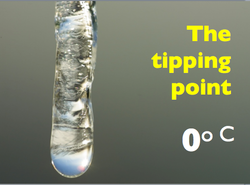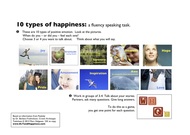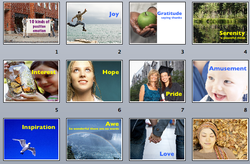- Home
- Awe (NEW 7/24)
- This ain't "happy-ology"...
- Philippiness 2/23 Science of Happiness - Class & Life
- SofH - class & life Spring 2022
- NEW - Time Confetti
- NEW - Happiness Hacks
- NEW - The Power of Fun
- Getting started
- Introducing happiness
- Main Activity Download Center
- 10 Minutes for Happiness (quick tasks)
- Happiness Haiku (consolidation)
- Positive brain chemicals
- New! 3 minutes for positivity
- Becoming Friends
- Savoring
- 5 photos (A savoring task with student projects)
- Flourishing
- Flow
- Positivity
- Laughter
- Meditation
- Mindfulness for kids
- Balloon toss (icebreakers)
- Song/lip dub (Marc's Ss): Pharrell William's HAPPY
- Activities from other teachers
- Don't laugh at me
- Videos of Marc's Talks
- Posters
- Bookshelf (NEW books listed)
- Links
- NUFS MA TESOL task page
- English Firsthand syllabus tie-in
- Monk for a Month (mindfulness)
- Misc PowerPoint downloads
- Contact Marc
- .
- InnovationsPosPsych downloads
- Positive Psychology in SLA (book)
- ..
- NEW BOOK
- test page
- songs for distance teaching
The 3:1 ratio challenged.
In summer, 2013, the positivity "tipping point" of 3:1 was questioned. Researchers are saying the math used by Fredrickson and Losada doesn't work. Here is a short article summarizing the criticism. The critical article by Brown, Sokal and Friedman is here. Fredrickson acknowledges that there may be problems with the math and the specific ratio but points out many empirical studies that support her "broaden and build" theory that indicates that experiences of positive emotion do correlate to increased creative options and positivity. Her rebuttal to Brown, et al. is here.
Here is a recent (Jan. 2014) article from Positive Psychology Daily News.
My own take as a teacher is that, while we can't count on a tipping point (we just don't have the evidence), we do know from many studies that increasing experience of positive emotion has positive results. And this doesn't mean students need to actually have many more good things than negative ones happen. Savoring (mentally noticing and appreciating) positive experience -- past, present and future -- can have good results. See the ideas on the Savoring, Flourishing and Flow pages of this website.
Here is a recent (Jan. 2014) article from Positive Psychology Daily News.
My own take as a teacher is that, while we can't count on a tipping point (we just don't have the evidence), we do know from many studies that increasing experience of positive emotion has positive results. And this doesn't mean students need to actually have many more good things than negative ones happen. Savoring (mentally noticing and appreciating) positive experience -- past, present and future -- can have good results. See the ideas on the Savoring, Flourishing and Flow pages of this website.
Positivity and the "tipping point"

(This entry is older than the above). "The tipping point" is not just a metaphor. It is an actual scientific concept. It is the point at which a fundamental change happens. The easiest example is water. At zero degrees C, it changes from water to ice. One icicle doesn't mater much, but ask any polar bear: tipping points matter.
Dr. Barbara Fredrickson is an award-winning researcher at the University of North Carolina Chapel Hill and the author of Positivity. Fredrickson's research shows that when we reach a ratio of 3:1 (three experiences of positive emotion to one experience of negative emotion), we reach a tipping point. We have an increase in happiness, health and creativity. We enter an "upward spiral". The ratio is called the "Losada ratio" after the Chilean economist who first noticed it in companies.
This doesn't mean you have to have three times as many good things and negative things happen -- you just need to experience the emotion. Remembering counts. For example, take a minutes to think of a time you felt loved or very happy. Think of an actual time. Ask yourself the WH-questions: When did this happen? Who was a with? Where was I? Why did it happen? If you actually thought of a time, you probably feel happier now than you did just a minute ago. You are re-experiencing that positive emotion.
Fredrickson has identified 10 types of positive emotion: Joy, gratitude, serenity, interest, hope, pride, amusement, inspiration, awe and love. The task sheet noticing positives introduces these ideas, and asks learners to think of times they felt each emotion. This leads to either a speaking or a writing task.
New Task: 10 types of happiness fluency game

Here's a fluency game. Learners look over the list of 10 positive emotions, think about what they want to talk about, then share with partners. Partners ask questions (which, in turn, create an "active/positive" response in the speaker -- s/he usually re-experiences the positive emotion more deeply.)
PowerPoint intro - 10 types of positive emotion plus the tipping point

Here is a PowerPoint slideshow I use to introduce the idea of 10 types of positive emotion, moving from there to savoring. Information about what I say about each slide is on the notes section for each slide.